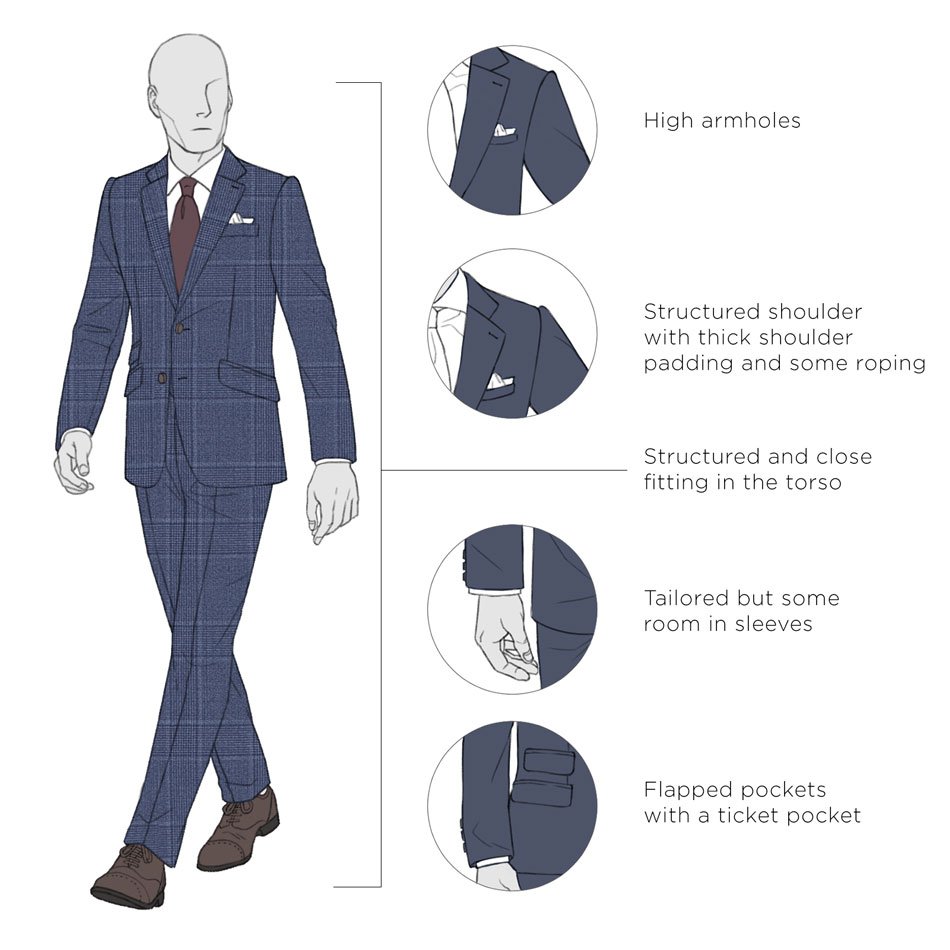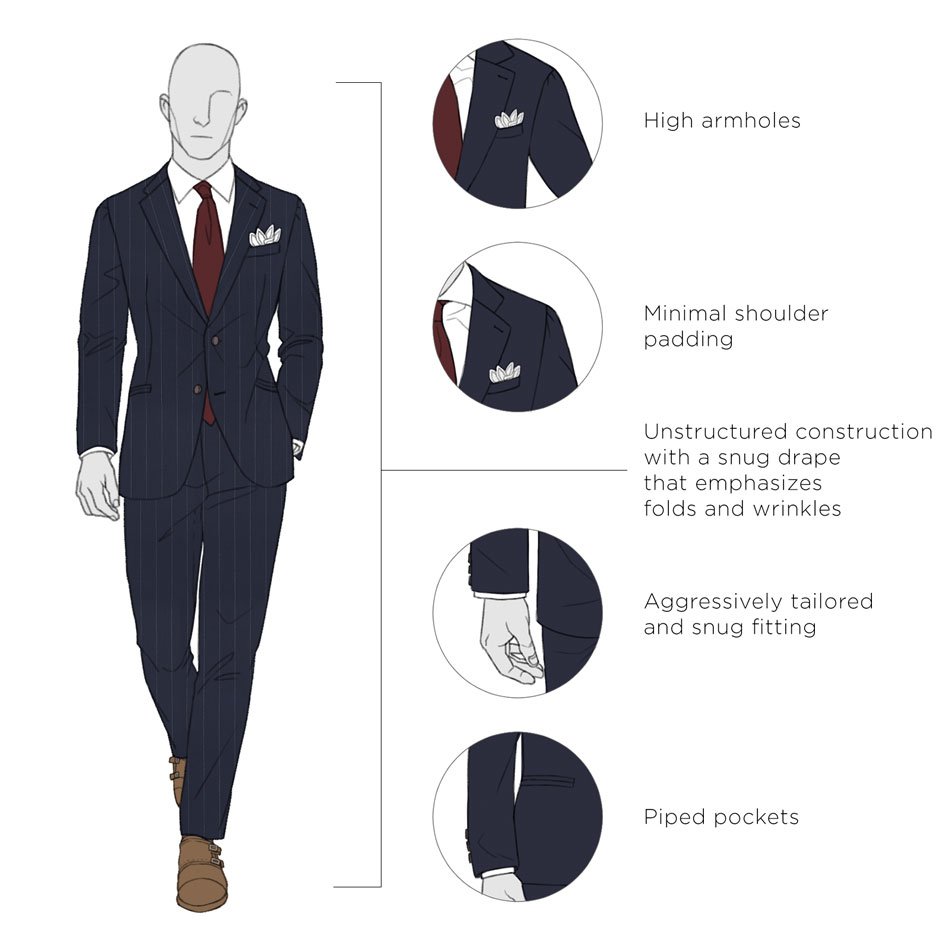Modern Suit Styles: American, British and Italian
It’s commonly accepted that all suit styles, however varied, can be reduced to three template fits that serve as their foundations. These three general cuts have been named after the countries in which they originated: America, the UK, and Italy.
Although the lines may blur today on certain details, each of them has its own characteristics and identity. Therefore, it’s worth learning their similarities and differences when building your wardrobe.
Hariom’s Tailor offers a comprehensive range of design options. Our team of fitters are here to help with every decision along the way. Our fitters have a genuine passion for suiting, which is evident from the moment you walk into our showroom. They are here to give you advice on not only which suit style is suitable for your needs and taste but also help you determine the colour, fit, proportion, fabric, appropriateness and everything in between. No prior suit knowledge is required; it is our job to get to know you and help express your character.
The American Suit Style
The 1920s in New York had a significant influence on a large group of dominant and wealthy businessmen. Companies, like Brooks Brothers for example – who are considered among the pioneers of the American suit, reinvented the suit in order to make it suitable for mass production. And we see these elements loud and clear just by having a quick attentive look at the American suit.
Often dubbed as the sack suit, the American cut is loosely-fitted, giving its wearer a soft silhouette. “Sack,” though, did not refer to the suit’s bagginess, but to a traditional French construction technique. Rather than forming the jacket’s back from four curved pieces of fabric, as was standard for formal wear, a ‘sacque’ coat was made using only two, straight panels. This technique gives the sack suit its characteristically ‘boxy’ look.
Traditionally, sack suits are single vented, without shoulder padding, and without darts, also known as folds that are sewn into a suit jacket’s canvas layer to increase the three-dimensionality of its elements, like lapels. Darts generally create a more ‘tailored’ look. The suit is best paired with full cut pants without pleats.
The British Suit Style
When London’s wealthy flocked to Savile Row, a street in London’s Mayfair district world-famous for its bespoke tailors, a distinctly British suit style was born.
An English cut suit is a highly structured and tailored garment. Because it originated in the practices of true bespoke tailoring, traditional British suiting has a far more ‘fitted’ look than the mass-produced styles that became emblematic of American style. Higher armholes made for closer-fitting sleeves. More elaborate and expensive, construction lent the British suit a tapered waist. Lightly padded shoulders, probably borrowed from highly-stylized military uniforms. And side vents garnered from a rich equestrian history that, by the time American suiting had solidified into a ‘style,’ was out-moded.
The garment is definitely better suited for heavier fabrics such as tweeds, heavy woollen blazers and suit fabrics which are generally on the greater GSM side. You can also see it single or double breasted, with usually two vents. The suit is best paired with high-waisted pants with single or double pleats.
Summed up in one word, the English suit is elegant. It is a true gentleman’s cut.
The Italian Suit Style
Ermenegildo Zegna, Armani, Nazareno Fonticoli - are some of the many names who have significantly impacted the design of the Italian suit. With a slim and stylish design to reflect the nature of the Italians, the Italian cut plays on the smaller waist of the average European man to create a dramatic inverted triangle. This lends itself to an image of power and the impression that you know fashion.
The Italian suit is characterised by high buttons, padded shoulders, very slim and tailored waists, and the absence of pocket flaps and vents. They pair best with pants with a tapered waist, tight hips and no breaks.
The Italian suit works better for any man who’s small-framed, as many Italian men are. Short, thin guys are well-served by the characteristically short jacket and high buttoning stance of Italian suits, and thin men look sharper in their slimmer fit.
It is the suit for the sartorially inclined, modern man, guaranteed to set you apart from everyone else in the room. It is a suit that will get you noticed and a suit which gets appreciated.






